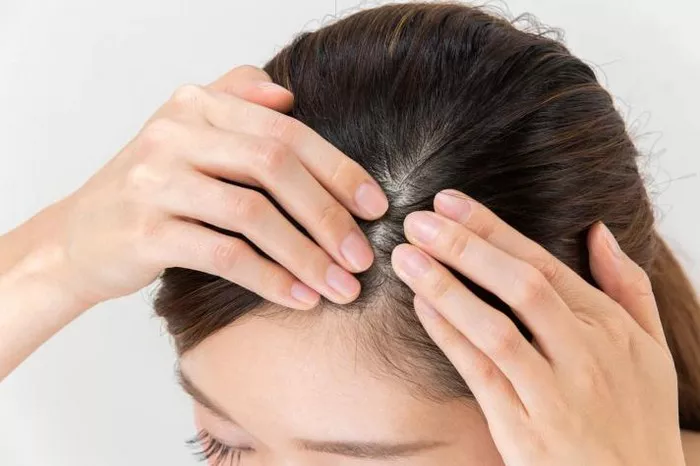Hair is a significant aspect of our appearance and self-confidence, but it can face various challenges, including damage that can lead to what is often referred to as “dead hair.” Dead hair, characterized by dryness, brittleness, and a lack of elasticity, can be a distressing issue for many. In this comprehensive guide, we will explore the causes of dead hair, whether it can be revived, and practical steps to restore and maintain healthy hair.
Understanding Dead Hair
Dead hair, also known as severely damaged hair, is hair that has lost its natural moisture, elasticity, and strength. This condition can be caused by a variety of factors, including:
External Factors
- Heat Styling: Frequent use of hot tools like blow dryers, straighteners, and curling irons can dehydrate and damage the hair shaft.
- Chemical Treatments: Processes like coloring, bleaching, and perming can break down the hair’s protein structure, leading to dryness and brittleness.
- Environmental Factors: Exposure to sun, wind, and pollution can strip the hair of its natural oils and cause damage.
- Physical Damage: Rough handling, tight hairstyles, and excessive brushing can lead to breakage and damage.
Internal Factors
- Nutritional Deficiencies: A lack of essential nutrients like vitamins, minerals, and proteins can weaken hair and make it more susceptible to damage.
- Medical Conditions: Certain health issues, such as thyroid disorders, anemia, and hormonal imbalances, can affect hair health.
- Genetics: Genetic predispositions can play a role in the strength and resilience of your hair.
Can Dead Hair Be Revived?
While the term “dead hair” might sound irreversible, it is possible to revive and restore damaged hair to a healthier state. However, it requires patience, consistent effort, and the right approach. Here’s a detailed look at how you can save dead hair:
Step-by-Step Guide to Reviving Dead Hair
1. Assess the Damage
- Identify the Severity: Determine the extent of the damage. Mild to moderate damage can often be reversed with proper care, while severe damage may require more intensive treatment.
- Consult a Professional: If you’re unsure about the severity, consult a trichologist or dermatologist for a professional assessment.
2. Improve Your Diet
- Balanced Nutrition: Ensure your diet is rich in essential nutrients like vitamins A, B, C, D, E, iron, zinc, and omega-3 fatty acids. These nutrients are crucial for hair health.
- Hydration: Drink plenty of water to keep your body and hair hydrated.
3. Use Gentle Hair Care Products
- Sulfate-Free Shampoos: Sulfates can strip your hair of its natural oils. Opt for sulfate-free shampoos that are gentler on your hair.
- Moisturizing Conditioners: Use conditioners that are hydrating and nourishing. Look for ingredients like aloe vera, panthenol, and ceramides.
- Deep Conditioning Treatments: Regular deep conditioning treatments can help restore moisture and strength to damaged hair. Use hair masks or hot oil treatments once a week.
4. Avoid Heat Styling
- Limit Heat Use: Reduce the frequency of using hot tools. When you do use them, always apply a heat protectant spray to shield your hair from high temperatures.
- Air Dry: Whenever possible, allow your hair to air dry naturally. This can help preserve its natural texture and prevent further damage.
5. Protect Your Hair from the Environment
- Sun Protection: Use a hat or a hair product with SPF to protect your hair from UV rays.
- Pollution Defense: Consider using hair products that form a protective barrier against pollution and environmental toxins.
6. Practice Gentle Handling
- Brushing: Use a wide-tooth comb or a brush with soft bristles to detangle your hair gently. Avoid brushing wet hair, as it is more prone to breakage.
- Styling: Avoid tight hairstyles that pull on the hair, such as tight ponytails or braids. Choose gentle, low-tension styles instead.
- Sleeping: Use a silk or satin pillowcase to reduce friction and prevent breakage while you sleep.
7. Treat Split Ends
- Trim Regularly: Get regular trims to remove split ends and prevent them from traveling up the hair shaft. Aim for a trim every 6-8 weeks.
- Seal Split Ends: Use a split-end mender or a hair serum to temporarily seal split ends and improve the appearance of your hair.
8. Use Hair Masks and Oils
- Hair Masks: Apply a hair mask once a week to deeply nourish and repair damaged hair. Look for masks containing ingredients like keratin, argan oil, and avocado.
- Natural Oils: Use natural oils like coconut oil, olive oil, or jojoba oil to moisturize and strengthen your hair. Apply the oil to your hair and scalp, leave it on for a few hours, and then wash it out.
9. Consider Professional Treatments
- Keratin Treatments: Keratin treatments can help smooth and strengthen damaged hair. They involve applying a keratin solution to the hair and sealing it with heat.
- Protein Treatments: Protein treatments can help rebuild the hair’s structure and improve its strength. They are particularly beneficial for severely damaged hair.
- Laser Therapy: Low-level laser therapy can stimulate hair follicles and promote hair growth. It is often used in conjunction with other treatments.
Conclusion: Reviving and Maintaining Healthy Hair
In conclusion, while dead hair can be a challenging issue, it is not a hopeless one. With the right approach, you can revive and restore damaged hair to a healthier state. By improving your diet, using gentle hair care products, protecting your hair from the environment, and practicing gentle handling, you can bring back much of your hair’s natural beauty and strength.
- Can Damaged Hair Roots Be Repaired?
- Can Damaged Hair Repair Itself?
- Is It Possible to Get Virgin Hair Again?


